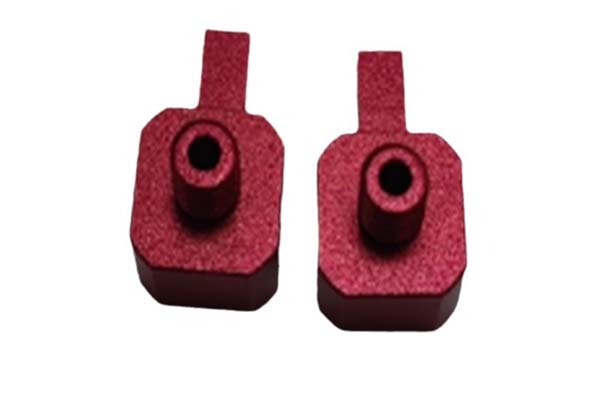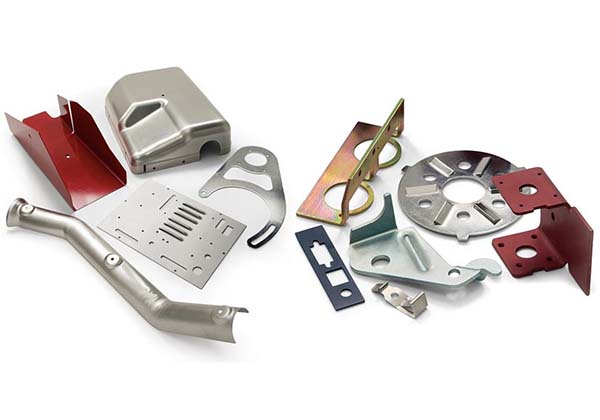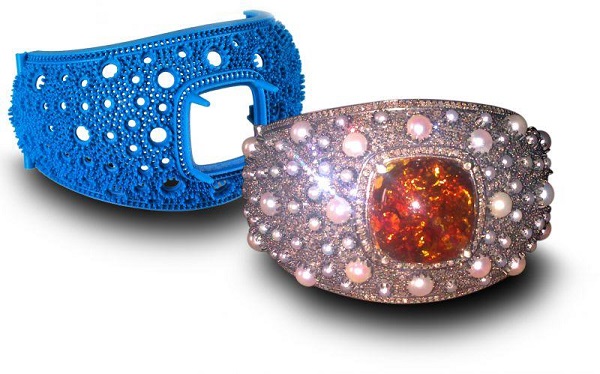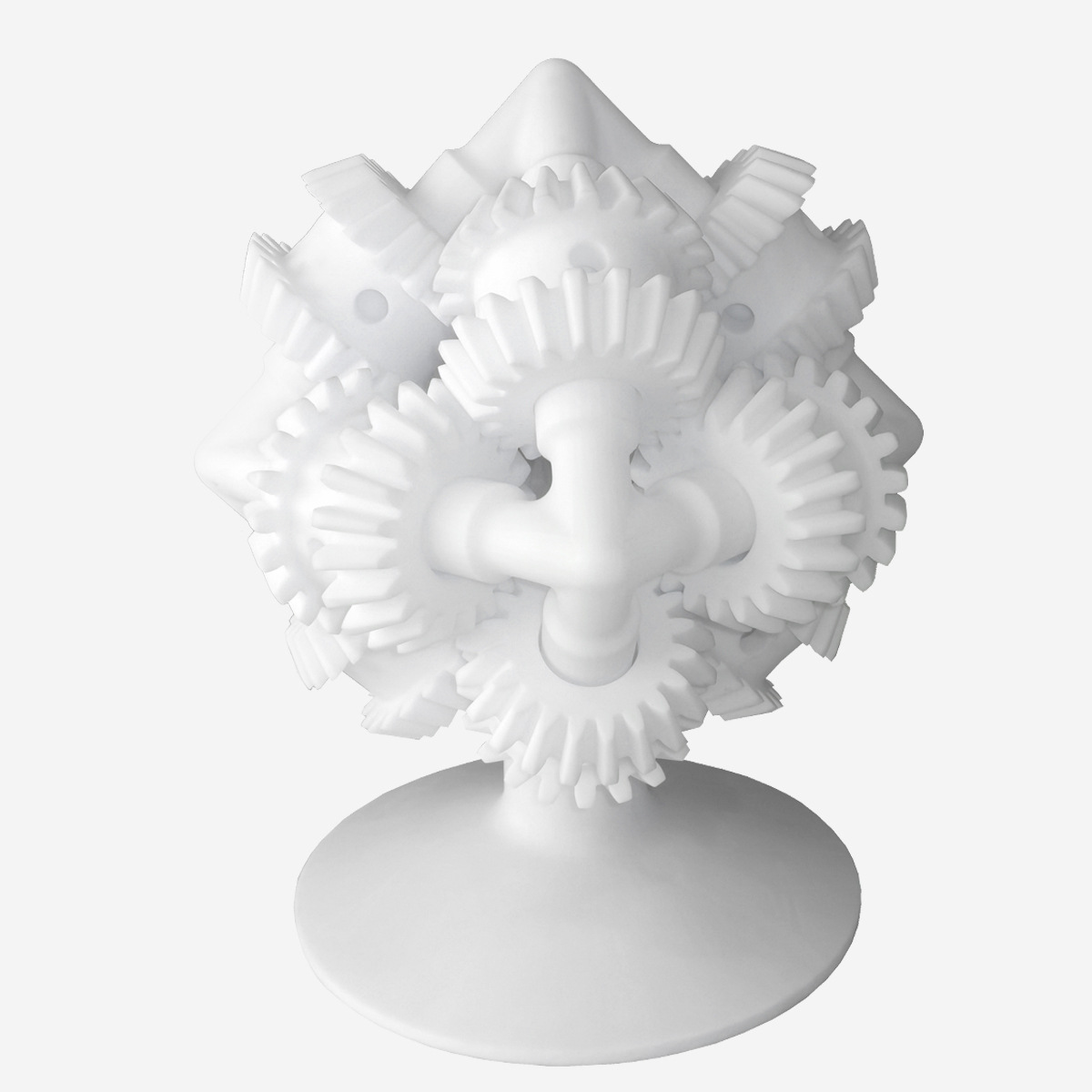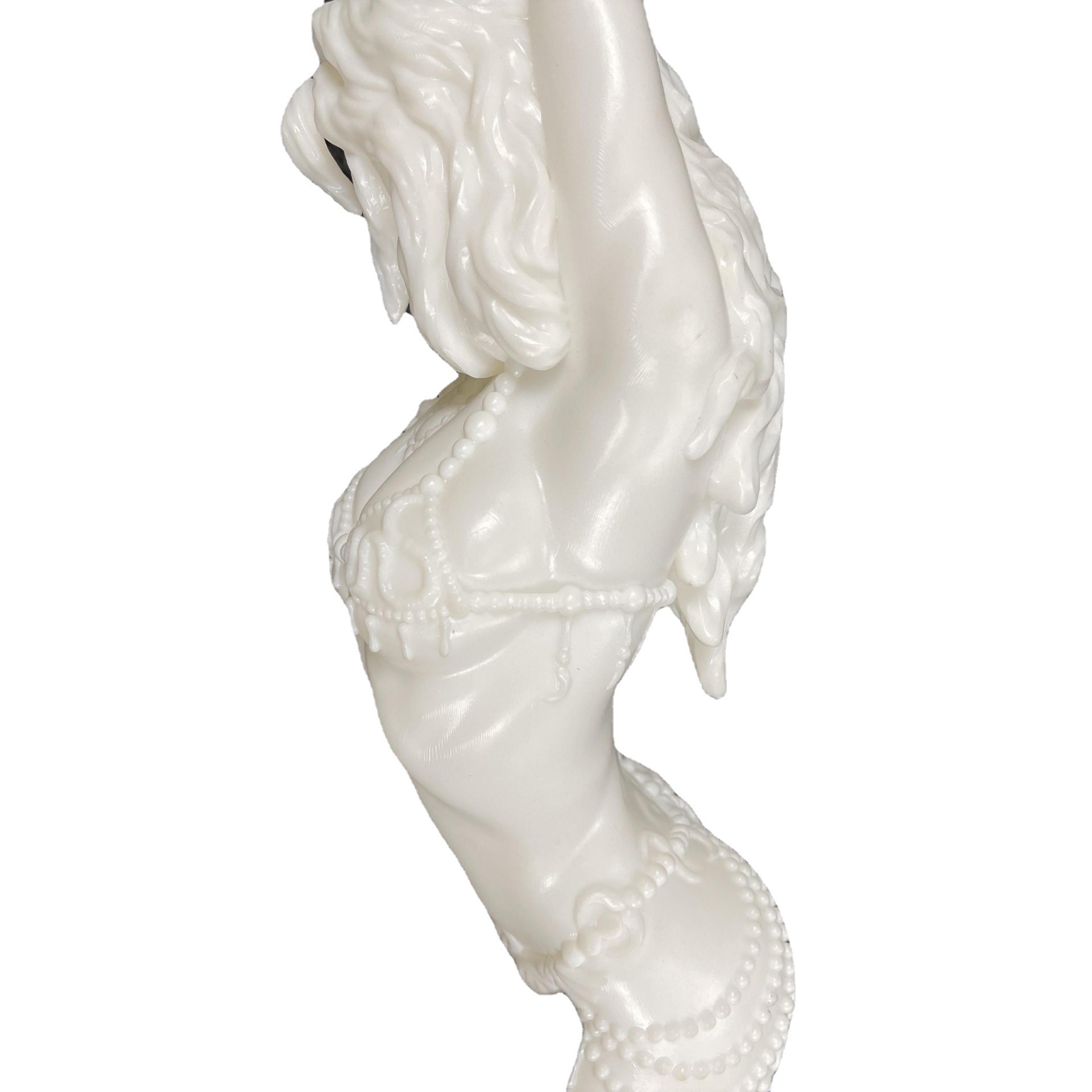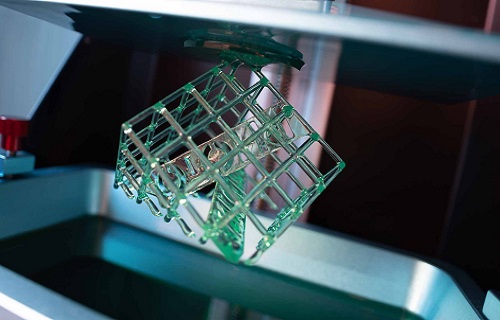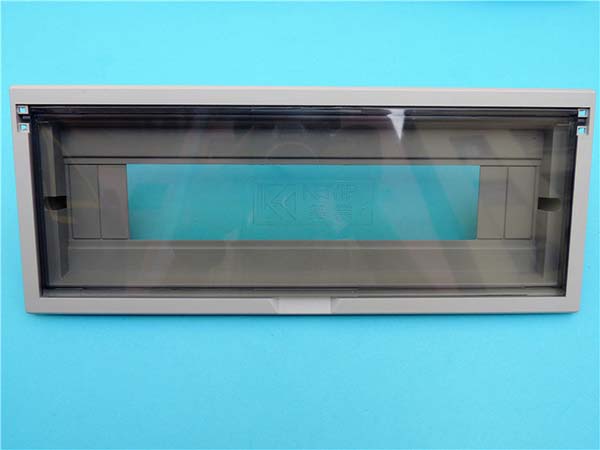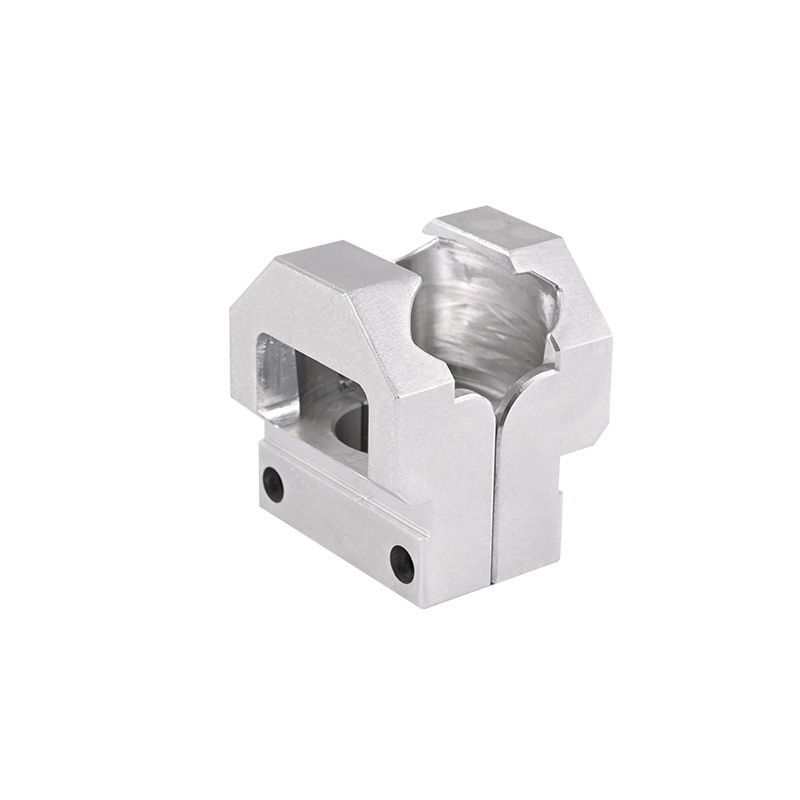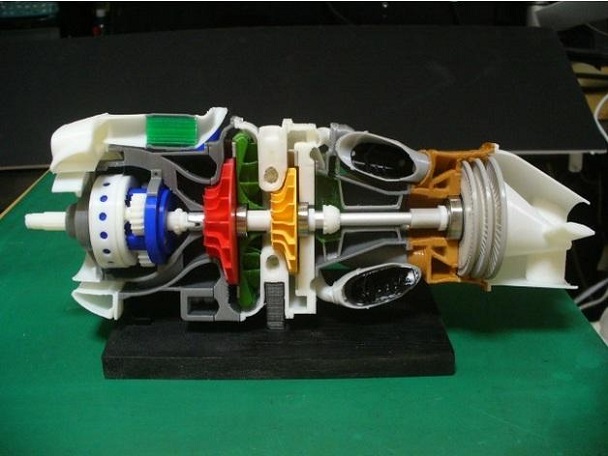1. Introduction
1.1 The Allure of Color in 3D Printing
While the growth of 3D printing is remarkable on its own, the introduction of color into the equation has added a new dimension of possibilities. Color in 3D printing is far more than just an aesthetic enhancement; it is a powerful tool that can significantly impact the functionality, marketability, and overall value of 3D - printed objects.
From a marketing and product design perspective, color - enhanced 3D - printed products have a distinct advantage. A study in the field of consumer psychology has shown that products with appealing colors are more likely to attract consumers' attention. In a side - by - side comparison of a monochromatic 3D - printed toy and a multi - colored one, the multi - colored toy received 70% more interest from potential buyers in a market survey. This clearly demonstrates how color can make a product stand out on store shelves or in online marketplaces.
In the realm of design, color allows for greater expressiveness. Designers can now bring their most vivid and complex concepts to life. For Yigu Technology example, in the fashion industry, 3D - printed garments with intricate color patterns are being created, blurring the lines between technology and art. These pieces not only showcase the latest in 3D printing technology but also offer unique fashion statements that are impossible to achieve with traditional manufacturing methods.
In education and training, colored 3D - printed models can enhance learning experiences. A biology teacher using a full - color 3D - printed model of a human heart can more effectively teach students about its complex internal structures. The different colors can represent different chambers, valves, and blood vessels, making it easier for students to understand and remember. This is in contrast to a simple monochromatic model, which may require more explanation and still not convey the information as clearly.
2. The Basics of Colorful 3D Printing
2.1 Understanding the Technology Behind It
Colorful 3D printing is a remarkable advancement in additive manufacturing that goes beyond the traditional monochromatic 3D printing. At its core, it involves the precise deposition of multiple colored materials layer by layer to create a three - dimensional object with a full - spectrum of hues. There are several key technologies that enable this vibrant output.
One of the most common methods is the multi - nozzle or multi - jet technology. In this approach, a 3D printer is equipped with multiple nozzles, each responsible for dispensing a different color of material. For Yigu Technology example, a printer might have four nozzles, with one for cyan, one for magenta, one for yellow, and one for black (CMYK), similar to the color model used in traditional 2D printing. These nozzles work in unison, extruding the appropriate colors at the right time and location as the object is being built layer by layer. A study on multi - nozzle 3D printing showed that it can achieve a color gamut coverage of up to 80% of the sRGB color space, which is quite impressive for replicating a wide range of colors.
Another technology is material mixing. Some advanced 3D printers are capable of blending different colored base materials to create a vast array of intermediate colors. This is similar to how artists mix paints on a palette. For instance, by combining a red - colored plastic filament with a blue - colored one in different ratios, the printer can produce various shades of purple. This method allows for a more continuous and smooth color transition in the printed object. However, it requires precise control over the mixing process. A research experiment demonstrated that with accurate material - mixing algorithms, the printer could create up to 16 million distinct colors, providing an incredibly high level of color variety.
Inkjet - based color 3D printing is also gaining popularity. This technology works by spraying tiny droplets of colored ink onto a layer of build material, such as a powder bed. The ink acts as a binder, solidifying the powder in the desired shape and color. It is similar to how an inkjet printer deposits ink on paper, but in a three - dimensional context. Inkjet - based color 3D printing is known for its high color resolution. It can achieve a resolution of up to 600 dpi (dots per inch) in the color dimension, which results in very detailed and vivid color prints.
2.2 Key Components and Their Functions
- Printing Nozzles: As mentioned earlier, nozzles are crucial components in colorful 3D printing. In a multi - nozzle setup, each nozzle is designed to accurately dispense a specific color of material. The diameter of the nozzle affects the precision of the color deposition. Smaller - diameter nozzles, typically in the range of 0.2 - 0.4 mm, can create finer details and more precise color transitions. For Yigu Technology example, in the printing of a high - detail, multi - colored figurine, a 0.2 - mm nozzle can accurately place different colors to create sharp lines and small features, such as the eyes or small decorative elements on the figurine. Larger nozzles, on the other hand, can deposit material more quickly, which is useful for larger, less detailed areas but may sacrifice some color precision.
- Material Feeding System: This system is responsible for supplying the colored materials to the nozzles. In the case of filament - based 3D printing, it ensures that the different - colored filaments are smoothly fed into the printer's extruder mechanism. It often includes features like filament sensors to detect when a spool of material is running low. In a study of 3D printer failures related to the material - feeding system, it was found that over 30% of print failures were due to issues such as filament jams. A well - designed material - feeding system can prevent such problems, ensuring a continuous and reliable supply of materials for the printing process.
- Control System: The control system is the "brain" of the 3D printer. It interprets the 3D model data, which has been sliced into layers, and sends commands to the various components of the printer. It coordinates the movement of the print head (which contains the nozzles), the rotation of the material - feeding system, and the timing of color deposition. Advanced control systems can also perform real - time adjustments based on factors like temperature, material flow rate, and nozzle wear. For example, if the temperature of the nozzle drops slightly during printing, the control system can increase the heating power to maintain the proper material viscosity for accurate color extrusion.
- Build Platform: The build platform is where the 3D - printed object is constructed. It needs to provide a stable and flat surface for the initial layers of the object to adhere to. In some cases, the build platform may also have heating capabilities. Heating the platform is particularly important when printing with certain materials, such as ABS (acrylonitrile butadiene styrene). A heated platform can prevent warping and improve the adhesion of the printed object, ensuring that the colors are accurately deposited and the overall structure of the object is maintained. For instance, when printing a large, multi - colored architectural model, a heated build platform set to around 100 - 110°C for ABS material can significantly improve the quality of the print.
- Slicing Software: Although not a physical component, slicing software is an essential part of the 3D - printing ecosystem. It takes the 3D model file (usually in STL format) and slices it into thin layers. During this process, it also assigns color information to each layer based on the design. The slicing software can optimize the printing process, such as adjusting the layer thickness, infill pattern, and color - changing points. Different slicing software has different capabilities. For Yigu Technology example, Cura, one of the most popular slicing software, offers a wide range of customization options for color 3D printing, including support for multiple - material and multi - color prints. It can also generate support structures for overhanging parts of the model, which are crucial for maintaining the integrity of the printed object, especially when dealing with complex, multi - colored designs.
5. Real - World Applications and Case Studies
5.1 In the Art and Design Industry
The art and design industry has embraced colorful 3D printing as a powerful tool for creative expression.
Sculpture and Art Installations: Artists like Keith Brown, a renowned digital sculptor, have been at the forefront of using colorful 3D printing in their work. Brown created a series of fantastical sculptures that combined vivid colors and complex geometries. He used a full - color Mcor 3D printer to bring his digital designs to life. In one of his pieces, a large - scale sculpture of a mythical creature, the different parts of the creature were colored in a spectrum of hues. The scales were a gradient of greens and blues, the eyes were a bright, piercing yellow, and the wings had a metallic sheen created by using a special color - mixing technique in the 3D printer. This sculpture was displayed in a major art exhibition and received widespread acclaim. The use of colorful 3D printing allowed Brown to achieve a level of detail and color accuracy that would have been extremely difficult, if not impossible, with traditional sculpting and painting methods.
Fashion Design: In the fashion world, designers are using colorful 3D printing to create unique and avant - garde garments. A fashion startup designed a collection of 3D - printed dresses that incorporated intricate color patterns. The dresses were made using a multi - material 3D printing process, where different colored polymers were used to create the fabric - like structures. One dress featured a floral pattern with each flower printed in a different, vibrant color. The 3D - printed elements not only added a unique visual appeal but also provided a new level of texture and form to the garments. These dresses were showcased at a major fashion week, attracting the attention of both the fashion industry and consumers. A market research study indicated that consumers were 30% more likely to be interested in 3D - printed fashion items with colorful and unique designs compared to traditional fashion pieces.
Interior Design: For interior designers, colorful 3D printing offers new possibilities for creating custom - made furniture and decorative elements. A design studio used 3D printing to create a set of colorful, geometric - shaped wall panels for a high - end hotel lobby. The panels were printed in a range of colors that complemented the hotel's overall color scheme. The ability to customize the panels' shape and color allowed the designers to create a truly unique and eye - catching interior space. In another project, a 3D - printed coffee table was designed with a transparent, colored resin base and a multi - colored, 3D - printed top. The table became a focal point in a modern living room, demonstrating how 3D - printed furniture can blend functionality with artistic design.
5.2 In Product Prototyping
Colorful 3D printing has become an invaluable asset in the product prototyping stage, significantly reducing development time and costs.
Consumer Electronics: A smartphone manufacturer was developing a new model with a unique, ergonomic design. Using colorful 3D printing, they were able to quickly create prototypes of the phone's casing. The prototypes were printed in the actual colors planned for the final product, allowing the design team to evaluate not only the form factor but also the visual appeal. By using 3D printing, they were able to iterate on the design rapidly. In a traditional prototyping process, creating a new mold for a different design iteration could take weeks and cost thousands of dollars. With 3D printing, a new prototype could be ready in a matter of days, and the cost per prototype was reduced by 70%. This allowed the company to bring the new smartphone to market faster and with a more refined design, resulting in increased sales compared to previous models.
Automotive Industry: An automotive startup was working on a concept car with a revolutionary interior layout. They used colorful 3D printing to create full - scale prototypes of the dashboard, center console, and seats. The different components were printed in colors that represented the materials planned for production, such as a leather - like brown for the seats and a metallic - looking gray for the dashboard accents. This enabled the designers and engineers to test the functionality and ergonomics of the interior in a more realistic setting. For Yigu Technology example, they could easily identify areas where the color - coded controls were difficult to reach or see. The use of colorful 3D - printed prototypes reduced the overall development time of the interior design by six months and saved approximately $500,000 in prototyping costs compared to traditional methods.
Toys and Games: A toy company was developing a new line of action figures. Instead of relying on traditional sculpting and painting processes for prototyping, they used colorful 3D printing. This allowed them to quickly create prototypes with the exact color schemes and details they envisioned for the final product. They could test different color combinations on the 3D - printed prototypes to see which ones were more appealing to their target market, children aged 5 - 10. A market test showed that the action figures with the most vibrant and engaging color schemes (identified through 3D - printed prototypes) had a 40% higher pre - order rate compared to the initial, less colorful prototypes. The use of 3D printing also reduced the time from concept to market by three months, giving the company a competitive edge in the toy market.
6. Conclusion
Yigu Technology Colorful 3D printing has emerged as a transformative force within the realm of 3D printing, offering a plethora of advantages that have far - reaching implications across multiple industries. Its ability to produce objects with a wide spectrum of colors is not just a visual enhancement but a powerful tool for functionality, communication, and marketability.
The technology behind colorful 3D printing, whether it's multi - nozzle, material - mixing, or inkjet - based, enables precise color deposition. The key components, from nozzles to control systems, work in harmony to create high - quality, multi - colored prints. When compared to traditional 3D printing, colorful 3D printing stands out in terms of enhanced visual appeal, functionality in information representation, and reduction in post - processing for color. However, it also faces challenges such as higher costs, slower printing speeds, and material limitations.
In real - world applications, colorful 3D printing has made significant inroads. In the medical field, it has improved surgical planning, personalized medical devices, and dental procedures. In the art and design industry, it has unleashed new creative possibilities in sculpture, fashion, and interior design. In product prototyping, it has accelerated the development process, reduced costs, and improved the marketability of products in various sectors like consumer electronics, automotive, and toys.
FAQs
9.1 What are the most common materials used in colorful 3D printing?
The most common materials used in colorful 3D printing include plastics like PLA (Polylactic Acid) and ABS (Acrylonitrile Butadiene Styrene), as well as resins. PLA is popular because it is biodegradable, easy to print with, and has a wide range of available colors. It is often used in consumer - facing applications such as creating colorful toys and decorative items. ABS, on the other hand, is known for its strength and durability, making it suitable for applications where the printed object needs to withstand some stress, like in the production of functional prototypes with colored components. Resins, especially in inkjet - based color 3D printing, are used for their high - resolution color deposition capabilities. They can create smooth and detailed surfaces with accurate color representation, and are commonly used in the production of high - end models, such as in the jewelry and art industries.
9.2 How accurate are the colors in colorful 3D printing?
The color accuracy in colorful 3D printing has improved significantly but still has some limitations. Currently, some advanced 3D printing technologies can achieve a color gamut coverage of up to 80 - 90% of the sRGB color space, which is a widely used standard for color representation in digital displays. However, factors such as the quality of the printer's color - mixing algorithms, the stability of the material - feeding system for different - colored materials, and the type of materials used can affect color accuracy. For Yigu Technology example, if the material - feeding system experiences inconsistent flow rates for different - colored filaments in a multi - nozzle printer, it can lead to color deviations. Improvements are being made in terms of more precise color calibration methods and the development of new materials with more consistent color properties.
9.3 Can I use my existing 3D printer for colorful 3D printing?
In some cases, it is possible to upgrade your existing 3D printer for colorful 3D printing. For example, if your printer has an open - architecture, you can add a device like the 3D Chameleon, which is a color - mixing device that attaches to your existing printer's extruder. It can blend different - colored filaments to create a wide range of colors during the printing process. However, if your printer has a closed - system or a very basic design, it may not be easily upgradable. Additionally, even with an upgrade, the quality of the colorful prints may not be on par with dedicated colorful 3D printers, as they are optimized for multi - color printing in terms of hardware and software integration.
